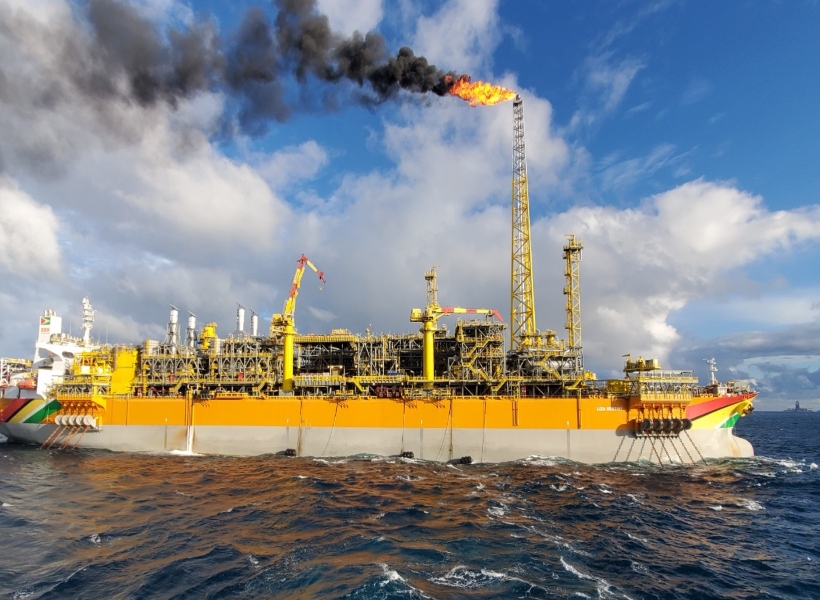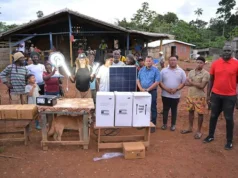ExxonMobil Guyana President, Alistair Routledge categorically stated today that there is no limit or cap on the amount of gas that the company can burn onboard the Liza Destiny. During a virtual operational update with the media, Routledge said he thought it necessary to clear the air on this matter since there are some media reports which suggest that the company is confined to a 14B mark.
It should be noted that several media outlets had reported on this figure as it was disclosed by Vice President, Dr. Bharrat Jagdeo. At his last press engagement, the official had said that there is a 14B cap on the flaring allowed by the Operator.
Routledge was keen to note however that in the Liza Phase One Environmental Impact Assessment (EIA), the 14B figure was born from academic assessments by third parties for discussions. He said that there is no cap on the permits that it received while adding that ExxonMobil does not perceive the number as a limitation.
Routledge said, “This has been incredibly frustrating and we continue to work on the issues to have an environmentally sound operation on the Liza Destiny.”Additionally, Routledge said that the technical issues being experienced with the gas compressor are most unusual, the root cause of which was axil vibration which resulted in the seal for the gas compressor experiencing technical issues.
The Exxon official stressed that the company is on track to getting the repaired equipment in-country within eight weeks. Once installations are done, he said that the Liza Destiny will return to the pilot levels which would see flaring being below the one million cubic feet of the gas mark.
Turning to other comments reported in that then flaring could be reduced significantly if the production levels were cut by 15,000 barrels of oil per day, ExxonMobil’s Production Manager, Mike Ryan asserted, “I wish it were that easy. This is a complex system and I understand it is technical so let me remind you…We can’t reduce flaring no matter what reduction in production is done. It is the flash gas compressor that is needed…” The only way the flaring can be stopped is if production is brought to a halt, expressed Ryan.
In the current circumstances, Ryan and Routledge said that the flaring does not constitute a violation of its permits as flaring is allowed under several circumstances, one of which includes maintenance and repairs.
As regards liability, Routledge was keen to note that ExxonMobil nor Guyana will be made to pay any costs as this is a manufacturer’s problem.
In addition to the new equipment that is being repaired and will be in the country in a matter of weeks, Guyana Standard understands that a spare compressor will be imported as well.
To date, ExxonMobil’s flaring from December 2019 to now stands at 13 million cubic feet.













